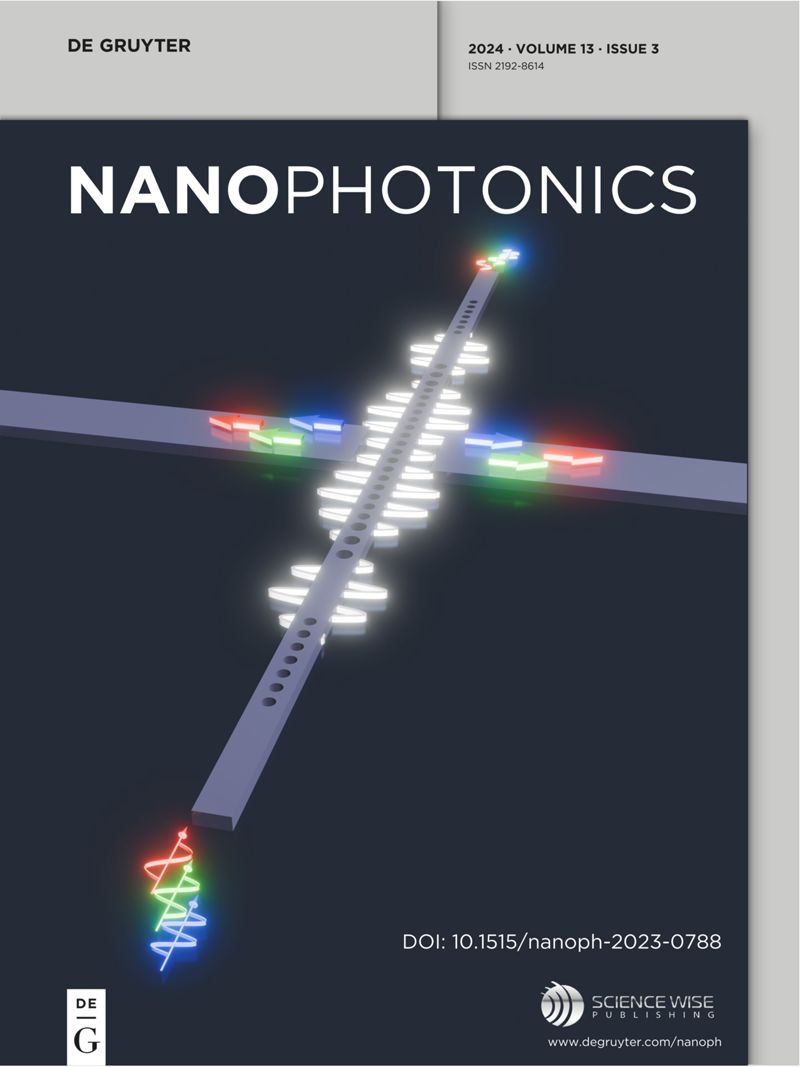Diagnostic oriented discrimination of different Shiga toxins via PCA-assisted SERS-based plasmonic metasurface
IF 6.5
2区 物理与天体物理
Q1 MATERIALS SCIENCE, MULTIDISCIPLINARY
引用次数: 0
Abstract
Plasmonic biosensors are powerful platforms for detecting various types of analytes. Specifically, surface-enhanced Raman spectroscopy (SERS) can enable label-free and selective detection. Shiga toxin-producing基于pca辅助sers的等离子体超表面对志贺毒素的诊断性鉴别
质子生物传感器是检测各类分析物的强大平台。具体来说,表面增强拉曼光谱(SERS)可以实现无标记和选择性检测。产志贺毒素大肠杆菌(STEC)是导致严重疾病的人畜共患病原体,如溶血性尿毒症(HUS),它是导致儿童急性肾功能衰竭的最重要原因。迄今为止,STEC 感染还没有有效的治疗方法,现有的诊断方法也很复杂且不确定。在这里,一种通过电子束光刻技术制作的新型纳米图案具有显著的等离子特性,被用作 SERS 基底,实现了对 Stx1a、Stx2a 以及后者的第三种变体的特异性识别。Stx1a 的检测限 (LOD) 为 6.8 pM,Stx2a 为 2 pM。我们利用主成分分析(PCA)支持的方法似乎是传统方法的有效替代方法,可以进行实时、快速的原位分析。
本文章由计算机程序翻译,如有差异,请以英文原文为准。
求助全文
约1分钟内获得全文
求助全文
来源期刊

Nanophotonics
NANOSCIENCE & NANOTECHNOLOGY-MATERIALS SCIENCE, MULTIDISCIPLINARY
CiteScore
13.50
自引率
6.70%
发文量
358
审稿时长
7 weeks
期刊介绍:
Nanophotonics, published in collaboration with Sciencewise, is a prestigious journal that showcases recent international research results, notable advancements in the field, and innovative applications. It is regarded as one of the leading publications in the realm of nanophotonics and encompasses a range of article types including research articles, selectively invited reviews, letters, and perspectives.
The journal specifically delves into the study of photon interaction with nano-structures, such as carbon nano-tubes, nano metal particles, nano crystals, semiconductor nano dots, photonic crystals, tissue, and DNA. It offers comprehensive coverage of the most up-to-date discoveries, making it an essential resource for physicists, engineers, and material scientists.
 求助内容:
求助内容: 应助结果提醒方式:
应助结果提醒方式:


